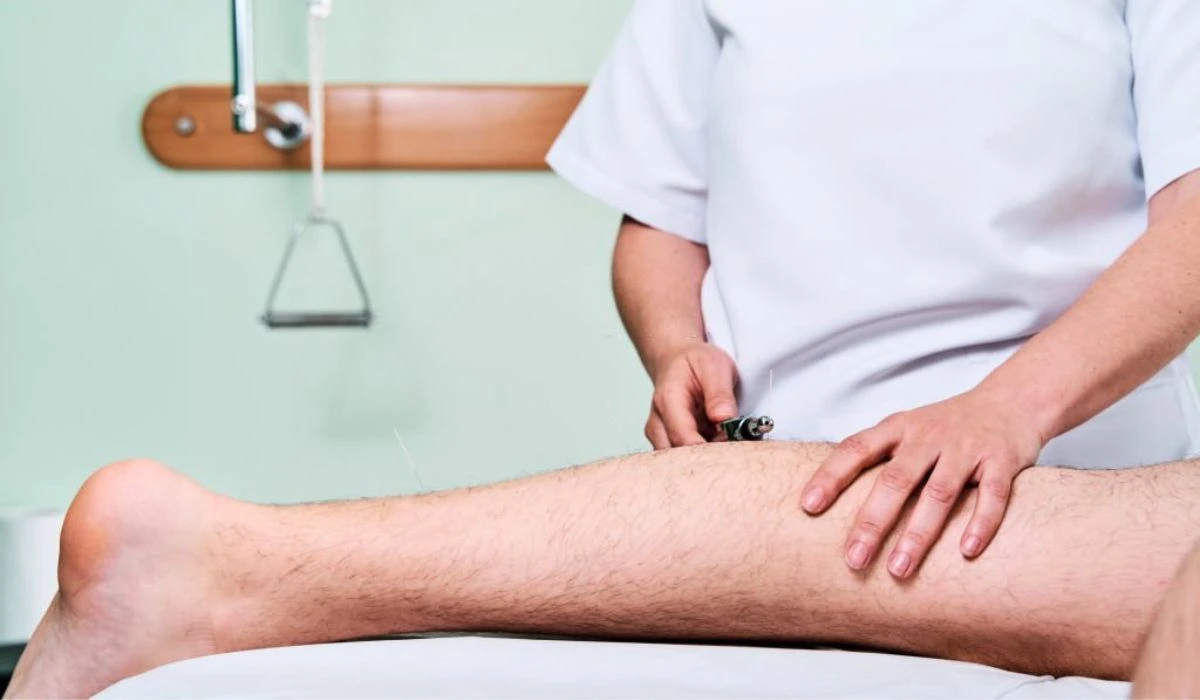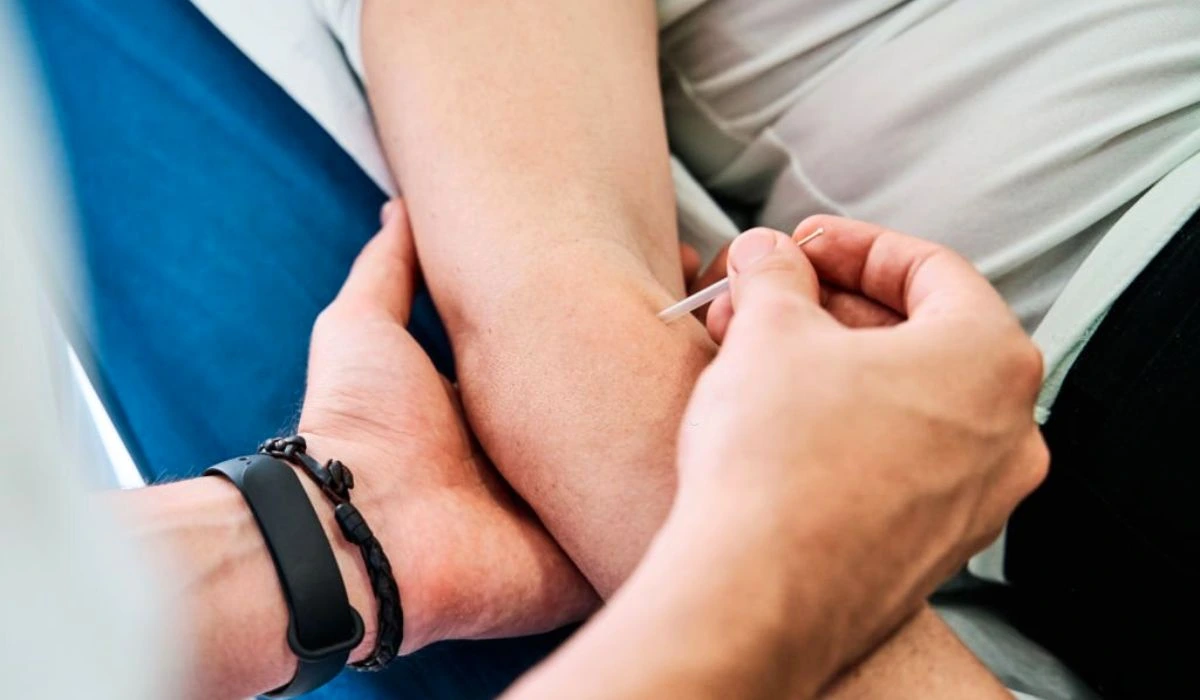In the world of activity, there are multitudinous ways and approaches aimed at easing pain and perfecting mobility. Intramuscular stimulation, commonly referred to as IMS, is another similar system that has gained popularity in recent times.
But what exactly is IMS, and how can it profit you? In this composition, we will claw into the world of IMS in activity, breaking down the basics and benefits, and constantly asking questions girding this interesting approach.
Are you living with patient pain, limited mobility, or muscle miserliness that just will not go away? Intramuscular stimulation, or IMS, could be the result you’ve been searching for. In this composition, we’ll explore IMS in action, furnishing you with perceptivity into how it works, its benefits, and what to anticipate during a session.
Whether you are a seasoned activity sucker or new to the world of muscle recuperation, this composition is designed to shed light on the fascinating world of IMS in a way that is easy to understand.
Understanding Intramuscular Stimulation
IMS, short for intramuscular stimulation, is a technical approach that physiotherapists use to treat a variety of musculoskeletal conditions. At its core, IMS involves the use of thin acupuncture needles to target trigger points within tight muscles.
These detector points, frequently referred to as knots, are areas of muscle that have contracted and bothered They can lead to pain, confined movement, and discomfort.

The goal of IMS is to release these detector points, promoting muscle relaxation and better blood flow to the affected area. By doing so, IMS can effectively reduce pain, enhance mobility, and ease the body’s natural healing processes.
Also Check: What Are The Benefits Of Sports Physiotherapy?
How Does IMS Work?
You might be wondering how sticking needles into your muscles can help relieve pain. It’s a valid question! Think of IMS as a reset button for your muscles. When a muscle becomes tight and forms trigger points, it can stay contracted, causing pain and dysfunction.
IMS needles are precisely inserted into these trigger points, stimulating a reflex that causes the muscle to contract and then relax. This contraction and relaxation cycle helps to release the tension in the muscle.
Additionally, IMS promotes the release of endorphins, the body’s natural painkillers, which can provide immediate relief and reduce pain sensitivity. The overall result is improved muscle function and a reduction in pain.
Conditions Treated With IMS
IMS is a versatile technique that can be used to address a wide range of musculoskeletal conditions. Some common issues that IMS can effectively treat include:
Chronic Back Pain: IMS is often used to relieve chronic back pain, including issues like sciatica.
Neck Pain: If you suffer from persistent neck pain due to muscle tension, IMS can provide relief.
Tennis Elbow: Tennis elbow is a common overuse injury, and IMS can help speed up the healing process.
Frozen Shoulder: IMS can improve the range of motion in cases of frozen shoulders.
IMS can help with tension headaches brought on by muscle tightness.
Hip Pain: Whether it’s due to injury or muscle tightness, IMS can address hip pain effectively.
What To Expect During An IMS Session
If you’re considering IMS treatment, it’s natural to wonder what the process involves.
During an IMS session, you can anticipate the following:
Assessment: Your physiotherapist will assess your condition and identify the specific detector points that need to be treated.
Needle Insertion: Thin acupuncture needles will be gently inserted into the identified trigger points. Don’t worry; the needles are very fine, and most people experience minimal discomfort.
Stimulation: Once the needles are in place, your therapist will stimulate the trigger points by gently moving the needles. This may cause a mild twitching sensation.
Relaxation: The muscles will start to relax after a brief period of stimulation, which will likely relieve whatever discomfort you were experiencing before.
Following-Up: Care To sustain the advantages of the treatment, your therapist could suggest stretches or exercises you can do at home.
Does IMS Hurt?
The topic of whether IMS hurts is among the most frequent and significant inquiries people have about it. When the needles are fitted, you can experience some mild discomfort, but it’s usually bearable. Many people claim to get relief as their muscles begin to relax during the session. The underlying benefits of decreased pain and improved movement often outweigh the minor discomfort.
It’s important to communicate with your physiotherapist throughout the session. They can adjust the needle placement or stimulation if you find any sensation uncomfortable.
Benefits Of IMS

IMS offers several benefits that make it a popular choice for those seeking relief from musculoskeletal issues. Some of the crucial advantages include:
Effective Pain Relief: IMS can provide significant pain relief, often when other treatments have failed.
Improved Mobility: By releasing tight muscles, IMS can enhance your range of motion.
Non-invasive: IMS is a non-surgical, minimally invasive procedure.
Quick Recovery: Numerous cases have witnessed rapid-fire enhancement after just a few sessions.
Customized Treatment: Your therapist can tailor the treatment to your specific needs.
IMS Vs. Other Physiotherapy Techniques
Wondering how IMS compares to other physiotherapy techniques? While IMS is highly effective for many conditions, it’s not the only approach available. Here’s a brief comparison:
IMS vs. massage therapy: IMS targets specific trigger points, while massage therapy focuses on broader muscle groups. IMS can be more precise for certain conditions.
IMS vs. Acupuncture: IMS uses acupuncture needles but differs in its approach. Acupuncture aims to balance energy flow, while IMS is primarily concerned with muscle tension.
IMS vs. Chiropractic Care: Chiropractic care frequently involves spinal adaptations, while IMS is muscle-concentrated. Both can be salutary, depending on the issue.
IMS vs. medication: IMS addresses the root cause of pain, whereas medication primarily manages symptoms. IMS can offer longer-term relief.
Read More: Top 10 Physical Therapy For Posture Correction – Explored!
Finding A Qualified IMS Practitioner
If you’re considering IMS as a treatment option, it’s essential to find a qualified practitioner. Here are some tips for selecting the right IMS therapist:
Credentials: Ensure the practitioner is a licensed physiotherapist with training in IMS.
Experience: Look for someone with experience treating your specific condition.
Reviews: Check online reviews and ask for referrals from friends or family.
Consultation: Record an original discussion to clarify your requirements and assess the guru’s approach.
Frequently Asked Questions (FAQs)
- What is the main goal of IMS treatment?
The primary goal of IMS is to release tight muscle trigger points, thereby reducing pain and improving mobility. It’s about restoring normal muscle function and alleviating discomfort.
- How long does it take to see results with IMS?
Results may vary from person to person, but a large number of individuals have experienced some relief after the first session. For long-lasting results, multiple sessions may be needed, generally spaced a week or two apart.
- Are there any side effects of IMS?
While IMS is generally safe, some individuals may experience minor bruising or soreness at the needle insertion sites. These effects do not last for long.
- Can IMS be combined with other treatments?
Yes, IMS can also be combined with other physiotherapy treatments or modalities, depending on your condition. Your therapist will tailor the approach to your specific needs.
- Is IMS suitable for everyone?
IMS is generally safe for most people, but it may not be suitable for certain medical conditions or during gestation. It’s essential to consult with a good physiotherapist to determine if IMS is the best choice for you.
In conclusion, intramuscular stimulation (IMS) during activity offers a very effective way to address muscle pain and limited mobility. With its capability to target specific detector points and promote muscle relaxation, IMS has become a precious tool in the world of rehabilitation.
However, it is considered a good idea to consult with a good IMS expert to see if this treatment option is right for you if you are floundering with musculoskeletal issues.